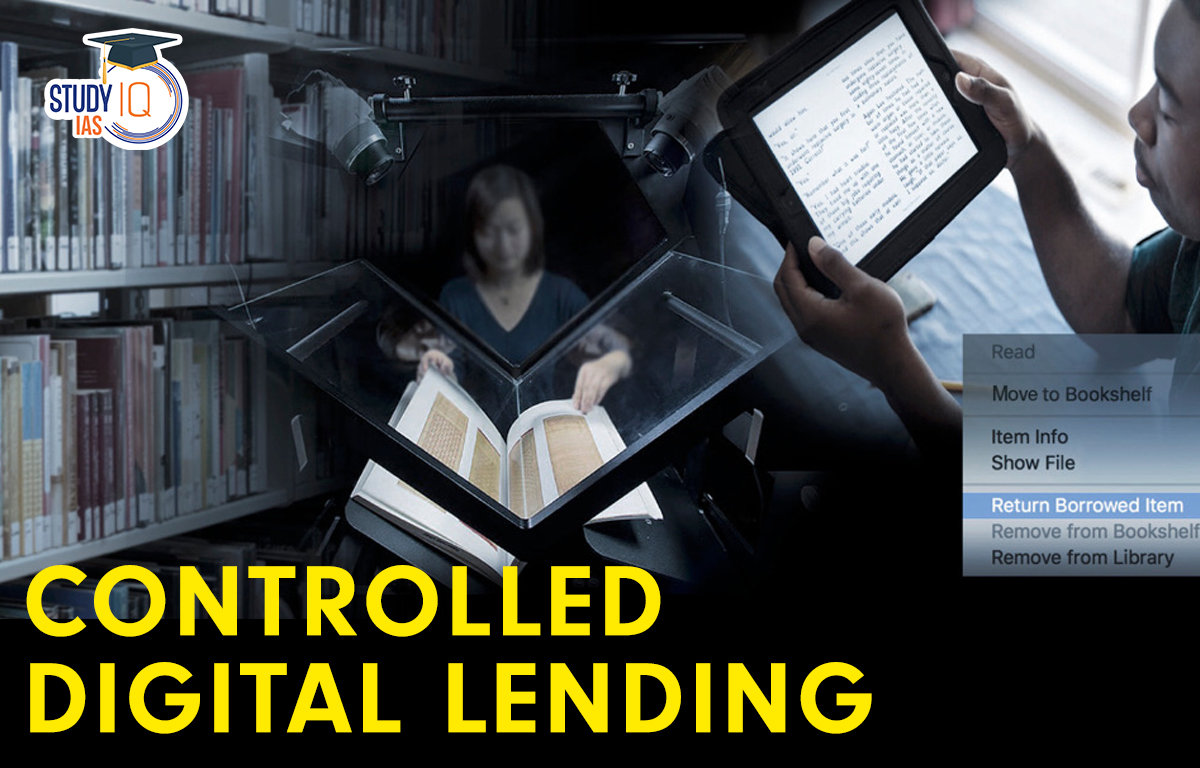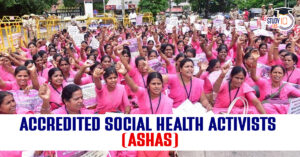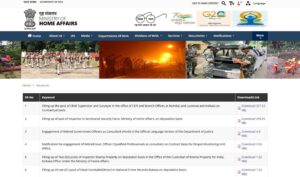Table of Contents
Context: Recently, a federal judge in New York ruled that the Internet Archive (IA) violated U.S. copyright law when it digitized countless physical books and offered them through ‘Controlled Digital Lending’ (CDL).
About Controlled Digital Lending
- Controlled Digital Lending (CDL) is a developing practice which allows libraries to lend a digital copy of a physical resource in the same way in which they lend the physical resource itself.
- The label was coined by the Internet Archive and some lawyers and librarians to describe a particular methodology of digital piracy.
- Three core principles of CDL
- A library must own a legal copy of the physical book, either by purchase or gift.
- The library must maintain an equal “owned to loaned” ratio, simultaneously lending no more copies than it legally owns.
- The library should use technical measures to prevent the digital file from being copied or redistributed.
Working Mechanism of CDL
- A library, archive, or other organization legally obtains a printed copy of a book, either by buying a copy or by being given a used copy as a donation.
- Next the library (or a “partner” such as the Internet Archive) scans the book to create a digital copy.
- Digital copy is uploaded to a Web server, and used to make another digital copy for each reader.
- Example: If libraries of the All India Institute of Medical Sciences, the Indian Institute of Science, and the National Law School of India University (NLSIU) were partners in the IA’s digitisation project and each of these institutions had six physical copies of a particular book on health law, the CDL model would ensure that readers could borrow no more than three copies of that book at a time.
Significance of CDL
- CDL is a response to reader’s shift in habit for reading from books to smartphones and tablets.
- It helps bridge the gap between urban and rural, and the privileged and unprivileged readers vis-à-vis access to books.
- It allows even people in the remotest villages to access books from libraries that are far away.
- It eases access to many books that may have gone out of print or may not be available to access in many physical libraries.
- Accessibility led to enormous public benefits for education, research, and cultural participation.
Greater Implications of Judgment
- Judgement posed a fundamental question about the interface of copyright law and technological advancements — should copyright law protect the broader public interests or the commercial interests of the copyright holders?
- Argument against CDL: CDL infringes authors’ and publishers’ copyrights and deprives them of revenues that they would earn if readers obtained their works though other legitimate channels.
- The judgment concluded that the public benefits highlighted by the IA “cannot outweigh the market harm to the publishers”.
- The judgment prioritises the economic interests of just one of the stakeholders over the broader public interest.
- U.S. Supreme Court in Google LLC vs Oracle America, Inc., (2021) suggested that when determining the potential market effects as part of the ‘fair use’ analysis, one would have to weigh the public benefits of copying against potential financial losses for copyright holders.
- Copyright system is not just about protecting the interests of copyright holders, but, equally, about protecting the rights of the users of copyrighted works, and thus the broader public interest.
About Internet Archive (IA)
- It is a not-for-profit organisation trying to build a globally accessible digital library.
- IA has archived more than 735 billion web pages, 41 million books and texts, 14.7 million audio recordings, 8.4 million videos, 4.4 million images, and 890,000 software programs.
- A substantial portion of the books digitised by IA are outside copyright protection and are accessible without restrictions.


 Accredited Social Health Activists (ASHA...
Accredited Social Health Activists (ASHA...
 World’s 1st Unique Q-Shield Platform a...
World’s 1st Unique Q-Shield Platform a...
 IB ACIO Recruitment Notification 2025 Ex...
IB ACIO Recruitment Notification 2025 Ex...





















